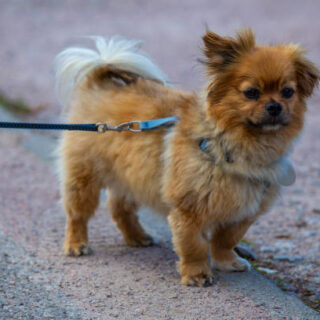Your cart is currently empty!

Single Product
Spanish Water Dog
Spanish Water Dog Although the Spanish Water Dog was primarily a retriever of wildfowl, he has also traditionally been used as a herder of sheep. His thick coat, a feature of the breed, requires clipping once or twice each year. General appearance Robust, medium sized, well muscled due to constant activity. Distinctive coat. Characteristics A…
Description
Spanish Water Dog
Although the Spanish Water Dog was primarily a retriever of wildfowl, he has also traditionally been used as a herder of sheep. His thick coat, a feature of the breed, requires clipping once or twice each year.
General appearance
Robust, medium sized, well muscled due to constant activity. Distinctive coat.
Characteristics
A herding, hunting and fishing dog with well developed sense of smell, sight and sound. Has great learning capability and adapts to almost all situations.
Temperament
Faithful, obedient, brave, good tempered and gay.
Head and skull
Strong and elegant with parallel planes of skull and muzzle. Flat skull, slight stop. Occiput not prominent. Length from eye to back of skull slightly longer than from tip of nose to eye (3:2). Nose should have well-open nostrils. Pigmentation of the same colour, or darker than, the coat. Corners of lips well defined.
Eyes
Medium-sized, oval shaped, neither prominent nor sunken. Very expressive. Set slightly oblique and well apart. Hazel or dark brown, depending on coat colour. Haws not visible.
Ears
Dropped, v-shaped, slightly rounded at tip; medium sized, set slightly above level of eye.
Mouth
Strong jaw with a perfect, regular and complete scissor bite, i.e. the upper teeth closely overlapping the lower teeth and set square to the jaw, with full dentition.
Neck
Short, muscular and without dewlap. Set well into the shoulders.
Forequarters
Good angulation of shoulder and upper arm. Well muscled. Elbows set close to body. Legs straight and parallel. Strong but not heavy bone.
Body
Level back; withers very slightly higher than level of back. Chest deep with well-sprung ribs. Brisket reaching to elbows and providing important heart and lung room. Height to elbow about half height at withers. Slightly longer in body (measured from point of shoulder to point of buttock) than from withers to ground (9:8).
Hindquarters
Moderately angled. Thighs large and well muscled. Second thighs well developed. Hocks well let down.
Feet
Round, tight. Toenails may vary in colour. Strong pads.
Tail
Previously customarily docked or natural bobtail.
Docked: Medium set. When attentive, decidedly raised, preferably never carried above level of back.
Undocked: Medium set, tapering towards the end. When extended, barely reaching the hock. At rest, carried scimitar-like. When attentive, decidedly raised, preferably never carried above level of back. Never curled.
Gait/movement
Brisk, sound and athletic, with powerful drive.
Coat
Always curled of a consistently woolly texture, forming cords when long. May be clipped overall but no aesthetic clip allowed (i.e. coat should be the same length all over).
Colour
Solid black, brown or white of various shades; black and white or brown and white (particolour) but never tricoloured.
Size
Height: dogs 44-50 cms (17½-19½ ins); bitches 40-46 cms (15½-18 ins).
Weight: dogs 18-22 kgs (40-48 lbs); bitches 14-18 kgs (31-40 lbs).
Faults
Any departure from the foregoing points should be considered a fault and the seriousness with which the fault should be regarded should be in exact proportion to its degree and its effect upon the health and welfare of the dog and on the dogs ability to perform its traditional work.
Note
Male animals should have two apparently normal testicles fully descended into the scrotum.





